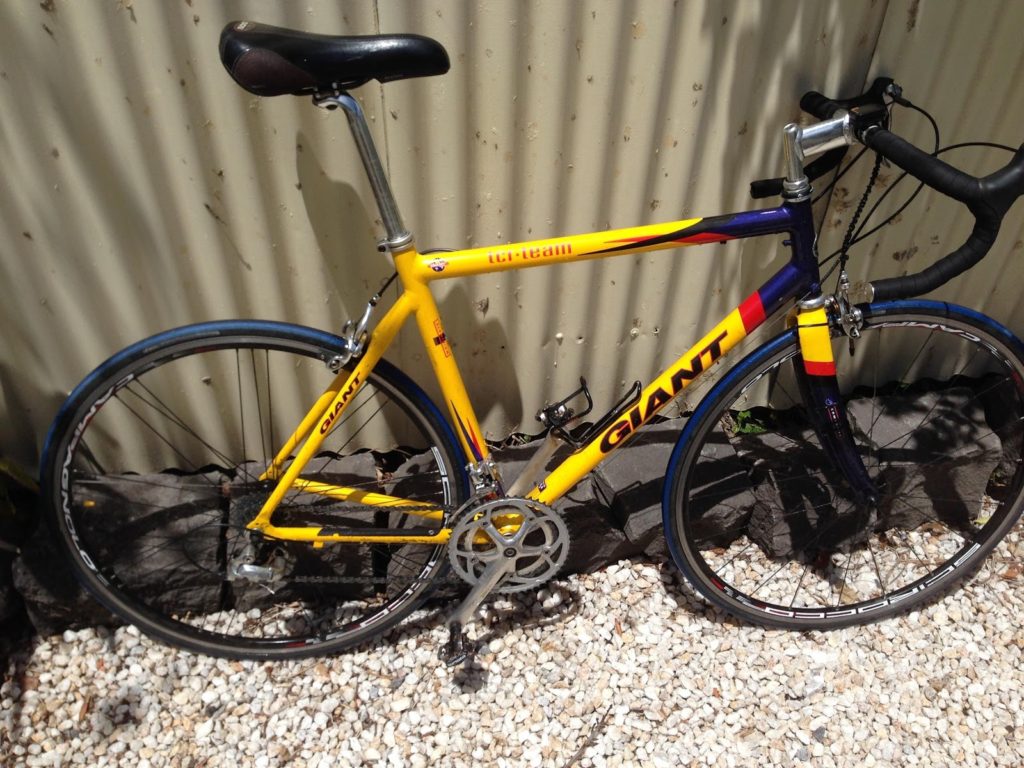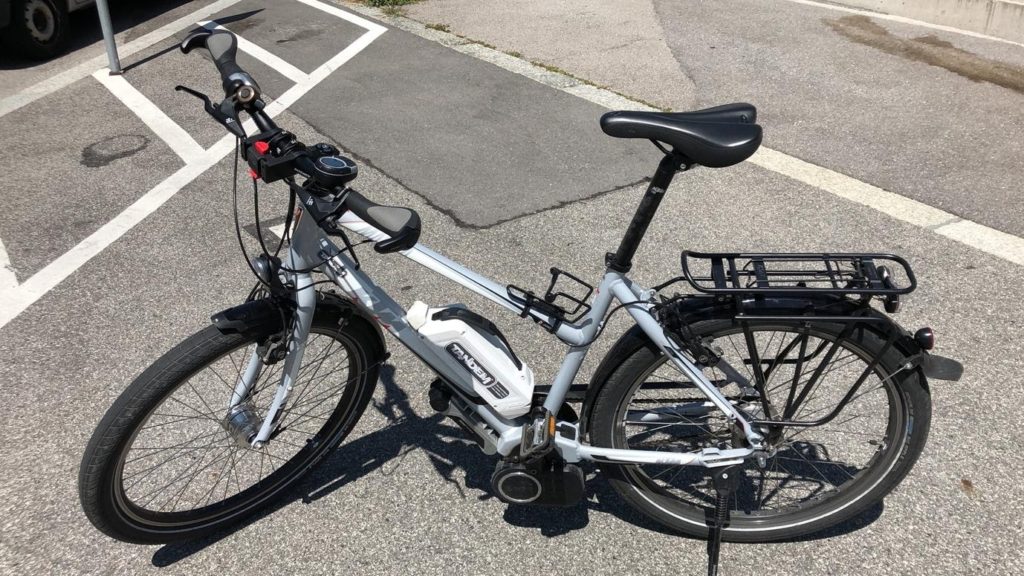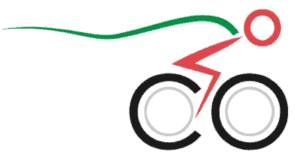Finding the correct riding position when you cycle is important as it helps to increase your control and comfort when cycling, and it reduces the strain on your body, all of which lead to a more enjoyable and safer ride. This then makes you want to cycle more often!
General rules of thumb
To find the correct bicycle riding position that works for you, you need to have three things in place:
- Correct frame size
- Adjust bike according to your
- Right type of bicycle for the intended use
Let’s see how you can find the riding position that provides you with the most comfortable ride.
Choosing the correct size bicycle frame size for you
You can have the most expensive bike in the world. If it’s not your size, there’s nothing you can do about it to make it comfortable!
Electric bikes built for everything and priced for everyone. Shop Rad Power Bikes, America's #1 electric bike brand. Get out. Go further. Ride Rad.
Generally, bicycle manufacturers, or bicycle stores, have a guide to fit rider height with the correct size of frame, below is an example from Edinburgh bicycle. Such guides are the best reference because the manufacturer has designed the frame to suit people with these heights, so most likely it will suit you.
Picture: Example bicycle frame sizing guide, source: edinburghbicycle.com
Check the recommendations for each bike you consider individually.
Bicycle frames can be sized in two ways as shown in the example, which can be confusing.
The base measure is the height of the top of the seat tube on the frame to the pedal crank (bottom bracket). In the example this is given in centimeters as the “conventional size” but this is also commonly given in inches.

To give this measurement some reference, companies usually also use a size. So, if you wear M clothing, an M bike might be a good starting point.
Watch out though, as other factors may change your riding position on the bike, and therefore even the same size frame from one bike to another bike might suit you differently.
Bicycle frame size adjustments
When a bicycle frame is designed it should cater for the majority of people. However not all of us have the same proportions, so to ensure you really have the correct frame size for you should check your ape index. If you find that your arm span to height is especially far from even, then it might be worth slightly adjusting the frame size to best fit you. For example, I have a high ape index of 1.07, so I have long limbs.
- Long limbs – short torso
Try a frame that is one size smaller so the top tube is shorter, and then your saddle is closer to the handlebars, and to suit your long legs adjust the saddle to a high position.

If, like me, you are more “ape-like” you will require a larger distance between the pedal and saddle as your legs are long (compared to most people of the same height), but a shorter distance is required from the saddle to handlebars as your back is comparatively shorter.
For example, I am 188cm / 6’2” tall but have a high ape index, so according to the table, I should use a 58-60cm or L frame size for this bike. But I feel much more comfortable with a M/L or M sized frame with a high saddle position.
- Short limbs – long torso
Try a frame that is one size larger so the top tube is longer and then your saddle is further from the handlebars, and then adjust the saddle to a low position.
Clearly, this advice is exactly the opposite of the previous condition. If you have a long torso or have a low ape index, you require a longer comparative distance from the saddle to the handlebars and a shorter distance from the saddle to the pedals.
Cycling experience and riding style
There are many different types of bicycles for different purposes and some suit different levels of experience of the rider better than others.
For general advice, we will turn this point around, because your level of bicycle experience determines which riding position you should use, which then determines which type of bicycle you should select.
Experience level:
Beginner or infrequent cyclist
Preferred riding position: Relaxed
As your muscle strength and skill level are slightly lower, using a relaxed riding position will help you feel comfortable on the bike while also getting used to all the other new learnings when cycling, like being aware of the traffic around you and finding different routes to get to your destination.
Many recreational cyclists also prefer a relaxed riding position to have a more comfortable ride, especially in settings where speed and maneuverability are not the main targets.
There are two major points that impact your riding if you are a beginner or infrequent cyclist;
- Muscle development: as your body is less trained at cycling, leaning more forward will cause more stress throughout your body and especially your back, arms and neck, therefore, positioning your back vertically reduces this strain.
- Touching the ground from the seat: typically, if you are less skilled, it might be difficult to also lift yourself off the saddle each time you stop to put your foot on the ground for balance. If this is a factor for you, GENERALLY (in no way certain), bicycles with a relaxed riding position also have a lower pedal height, which means you can touch the ground when seated. If this is a factor for you, and you have chosen a frame size, adjust the seat height correctly and check if you can also touch the ground when seated. If not, look for a bike with a lower pedal height.
Intermediate or regular cyclist
Preferred riding position: Moderate
When riding in the moderate position you will have more control over the steering and can pedal slightly harder than in a relaxed position. So, if you are cycling a shorter distance, say 5-10km per day, this might be the best position for you.
Personally, I also use this position on my commuter Hybrid bike now as I ride 5km each way. In the moderate position, my head is higher and I am more upright than when in the athletic position, so it is easier to see what’s going on around me. The moderate riding position offers good maneuverability.
Experienced or frequent cyclist
Preferred riding position: Athletic
If you start to ride longer distances, like more than 20km per day, then your speed starts to become a factor. By riding in an athletic position, and being cycle-fit, you have better aerodynamics which really comes into effect above 25 km/h (15 mph), plus you can push harder with each pedal stroke due to your body’s position. Overall this means you get a significant increase in your average speed, and so reduce your total ride time.
Previously I have had commutes that were 20 km each way, so 40 km total per day. When using a road bike with an athletic riding position I could save over 10 minutes on each ride, or 20 minutes per day, which definitely adds up over a week.

Small adjustments to tailor the bike to best suit you
Even once you have the correct size frame there are two other things you can adjust if your riding position still does not feel the way you want it.
Saddle position
You can change the saddle height to have your leg extended as much as possible when pedaling. And you can adjust the saddle forwards or rearwards to be closer or farther from the handlebars, which directly change your riding position. Moving the saddle closer to the handlebars moves you to a more relaxed position while moving the saddle farther from the handlebars moves you into a more athletic position.
We’ve covered the aspects of saddle adjustment in more detail in this article here.
Handlebar set-up
Different handlebar positions can adjust the distance from the saddle to handlebars too, as well as the height of your hands, with then affects your riding position too.
In the riding position picture, you can see the main difference between the athletic, moderate and relaxed positions is the handlebar position (although this is simplified).
To get a relaxed position the handlebars can be either swept backward, or raised higher (in this article you can read about the various ways you can make your bicycle more upright):
- Swept handlebars give a better position for your body, but it can be awkward to steer as the handlebars are close to your thighs when you turn sharp.
- Trekking or butterfly handlebars allow you to turn freely, but can put extra stress on your shoulders as your arms are raised higher.
For the moderate position “flat” handlebars are used with a raised, or upwardly angled, head stem. You can also use riser bars, which have the grip section higher than the section which connects to the head stem, combined with a flat head stem for the same effect.
For the athletic position flat bars and a flat head-stem are used. You can go even more extreme and move to an aerodynamic position by using drop bars that are common on road bikes, although your skill and strength should be medium to high before setting out with this set-up.
We have also covered the details for setting up your handlebars in more detail here.
The correct riding position for various bike types
In fact, each bike type is designed for a certain riding position, or set of riding positions, so to get the most out of your ride, it makes sense to match the bike to the riding positions it was designed for, otherwise, you might be trying to put a square peg in a round hole, and never really be able to get a comfortable or optimal riding set-up on your bike.
Road bike
Road bikes typically have drop bars that have a well-designed layout that allows you to cycle in three different riding positions by only moving your hands.
The best practice is to set up an athletic position with your hands in position 2 as shown in the picture on the handlebars. Position 2 is the best position to access all the controls for braking and changing gears – these are normally very important on a ride! Position 2 gives an athletic position with your hands farther forward, and therefore a flatter back. This position is good for most riding situations on a road bike.
With this set-up when you move your hands to position 1, a moderate position is achieved. I normally use this position when riding gently or when climbing and want to pull hard on the handlebars. Position 3 gives an aerodynamic position where your back is as flat as possible, which is great for getting maximum speed. For example, pro cyclists use this riding position in the sprint stage at the end of a race to get maximum speed due to the low wind resistance. Again, you have no, or limited, access to the brakes or gears when using this position, so only skilled riders who are comfortable moving their hand locations at speed should use this position. Also, it must be noted that when in an aerodynamic position there is a large amount of strain on your back, neck and arms as your back is almost flat. This means you should be well trained, strong and flexible before attempting to ride in this position.

Touring bike
This is tricky as there are many preferences that come into play for touring as the distances and time on the bike are so long, different people have different strength, flexibility, and mobility conditions, and there is no one true “touring bike” frame style.
A good set-up can be to use a moderate position with the ability to move into an athletic position for climbs or times you want to go faster, and perhaps a relaxed position for more relaxing moments. To achieve this use either trekking/butterfly handlebars or flat bars with bar ends. As you can see in the picture, trekking handlebars offer three hand positions like a road bike, although they are different from a road bike, and flat bars with bar ends offer 2 hand positions.
With both trekking handlebar types, a moderate position is achieved with position 1, and as you have access to the brakes and gears in this location it makes sense to set up your moderate position with position 1.
Position 2 on both bar types then gives an athletic position, which can be used for climbing and times you want to ride more quickly. Then the bonus of the trekking handlebars is that you can also use hand position 3 which gives a relaxed riding position as the hands are raised high, making your back more vertical. Note that with both handlebar types, when using hand position 2 or 3 you cannot access your brakes or gears, so some skill is required to use these hand positions.


Dutch-style bike
Relaxed.
The riding position picture shown above shows a relaxed position almost matching a Dutch-style bike.
If you are a beginner, feel you are not strong, or simply want to enjoy your ride without a focus on speed Dutch-style bikes are the winner.
I studied for a year in The Netherlands and happily commuted around for a year very comfortably on a Dutch-style bike. I definitely didn’t break any speed records, but really who cares? Also riding for a few hours in this position is less tiring.
Typically, Dutch-style bikes also have lower pedals and other geometry tweaks, which mean that even with a saddle well position to the pedals, you can still touch the ground, something that is not the case on all other bike types mentioned here (except some hybrid variants).
MTB (MounTain Bike)
There are two main types of MTB:
For Enduro MTBs broadly an athletic to moderate riding position is good, but depending on the steepness and roughness of the terrain, and your skill and strength adjust either way as you feel comfortable.
Steeper and rougher = more moderate; more skill and strength = more athletic.
Cross Country (XC) bikes use at least an athletic riding position as you want maximum power transferred. If the terrain is flatter and less rough you might start moving towards an aerodynamic position to reduce your air drag and increase your maximum speed.
Hybrid bike
Hybrids are a mix of the above bike types to best suit road riding for most people. This means Hybrid bikes typically use a moderate riding position, although there are many variants of Hybrids each leaning more or less towards the different typical bicycle types.
